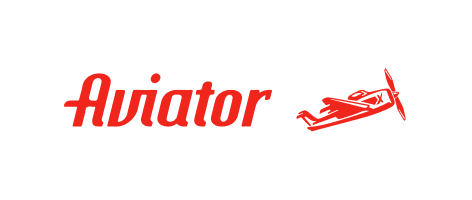What Is Drag Racing? Rules, Classes, and Safety
If you're curious about the world of drag racing, you'll quickly see it's more than just lining up and speeding down a straight track. You'll face strict rules, detailed vehicle classes, and a strong focus on safety—both for drivers and their cars. Whether you're aiming to compete or just want to learn how it all works, understanding what sets this motorsport apart is the first step. Let's see what it really takes to get started.
Key Requirements and Safety Standards for Drag Racing
Before participating in drag racing, it's vital to familiarize yourself with the necessary requirements and safety standards to ensure compliance and safety on the track. Proper safety gear is mandatory; participants must wear long pants, closed-toe shoes, and a sleeved shirt—tank tops, shorts, and flip-flops are prohibited.
During the technical inspection, race officials will assess the car's adherence to safety regulations. This includes verifying the security of battery hold-downs, the functionality of brakes, and the absence of any fluid leaks.
For vehicles that complete a quarter mile in under 11.49 seconds, the installation of a roll bar is required, while cars that exceed this time must have a full roll cage to enhance driver safety.
Additionally, it's essential to wear an NHRA-certified helmet appropriate for the speed classification of the vehicle. For competitors with the fastest cars, an NHRA Competition License is also required.
Following these guidelines is crucial for ensuring a safe and organized drag racing environment.
Driver Licensing and Event Participation Rules
Understanding the licensing and participation rules for drag racing is important for both new and experienced participants.
To compete, drivers need a valid driver's license if their vehicle runs slower than 9.99 seconds in the quarter mile. For vehicles that achieve quicker times, obtaining an NHRA Competition License is required. This process includes necessary physical examinations and supervised test drives.
It is also important to note that only licensed drivers are permitted to be in the vehicle during track activities, which means no passengers are allowed.
Adherence to safety gear regulations is critical, as failure to comply will result in disqualification from participation. Additionally, vehicles must undergo a technical inspection prior to racing to verify that they meet the established standards for safety and compliance.
Understanding NHRA Sanctioning and Equipment Regulations
All drag racing events sanctioned by the NHRA require compliance with established safety and equipment regulations. Participants are expected to adhere to NHRA safety guidelines, ensuring both their vehicles and personal gear meet SFI specifications. Modifications to certified safety equipment aren't permitted, as such alterations void certification and could result in disqualification from the event.
Prior to racing, each vehicle must undergo a technical inspection where NHRA officials evaluate essential safety components. This inspection includes assessments of the brakes, battery security, and tire condition.
Additionally, competitors driving vehicles that complete a quarter-mile in less than 9.99 seconds are required to possess an NHRA Competition License.
Helmets utilized in drag racing must, at minimum, meet DOT standards, though higher certification levels are mandated for vehicles performing at increased speeds.
Adhering to these safety regulations is crucial for the wellbeing of all participants involved in the event.
Drag Racing Classes and Vehicle Categories
Drag racing is structured into various classes and vehicle categories, each defined by specific technical requirements and performance criteria. At the highest level, Top Fuel dragsters are renowned for their ability to exceed speeds of 330 mph during quarter-mile runs. Alongside them, Funny Cars and Pro Stock vehicles operate under strict regulations set forth by the NHRA, ensuring that participants follow uniform performance standards and construction specifications.
Moreover, the sport includes two-wheeled contenders such as Pro Stock Motorcycles and Top Fuel Harleys, which demonstrate significant capabilities and contribute to the diversity of the racing field.
Additionally, the Factory Stock category showcases contemporary muscle cars, highlighting a combination of innovation and traditional automotive culture within drag racing. This structured classification not only facilitates fair competition but also illustrates the evolution and breadth of technology used in performance vehicles.
Track Procedures, Tech Inspections, and Pit Safety
Before the start of a drag racing event, it's essential for drivers and their teams to adhere to specific track procedures and conduct thorough safety inspections. Initially, teams must complete technical inspections to ensure the vehicle's compliance with safety standards. This includes verifying the condition of tires, proper securement of the battery, functionality of seat belts, and the presence of a neutral-safety switch.
Upon successful completion of these checks, teams will receive a tech card, which is necessary for participation in the event.
In the staging area, it's crucial to follow the designated procedures, including only proceeding into the water box for burnout maneuvers upon receiving a signal from the crew. This coordinated effort contributes to overall safety and efficiency in the staging process.
Moreover, after completing a run, drivers in the right lane must wait for the car in the left lane to exit the track before moving forward, in order to minimize the risk of accidents.
Pit area safety is another critical aspect of race day operations. Teams must adhere to a speed limit of 10 miles per hour within the pits and observe all established restricted zone regulations.
These measures are designed to protect both the participants and crew members, promoting a safe environment throughout the event. Compliance with these procedures is essential for ensuring the safety of all involved in the racing process.
Recommended Safety Gear and Featured Products
Ensuring safety on race day involves more than adhering to track procedures and pit regulations; it also requires the use of appropriate safety gear. In the context of drag racing, it's essential to use reliable and certified equipment.
To comply with safety standards, always wear an NHRA-certified helmet. For vehicles that complete a quarter mile in less than 13.99 seconds, a full-face helmet is recommended due to the increased protection it offers.
Additionally, wearing a racing suit that meets safety standards is crucial. The Speedway Economy SFI-1 Two-Piece Suit is a viable option, offering sufficient protection at a price of $142.99.
Incorporating a HANS (Head and Neck Support) device is advisable for further head and neck protection. This equipment can significantly reduce the risk of injuries during a collision or sudden deceleration.
To complete your safety gear, consider the Speedway Viper Mid-Top SFI 3.3/5 Racing Shoes, which provide necessary support and protection for drivers.
It's also important to regularly check the expiration dates of safety equipment, particularly helmets, to ensure compliance with safety regulations and maintain an adequate level of protection.
Conclusion
Drag racing puts your skills, reflexes, and preparation to the ultimate test, but it’s as much about safety as it is about speed. If you’re thinking about getting involved, make sure you follow NHRA guidelines, choose the right class for your vehicle, and invest in quality safety gear. Stay alert during tech inspections and track procedures—these rules exist to keep you and everyone else safe. Enjoy the adrenaline, but never compromise on safety or preparation.

